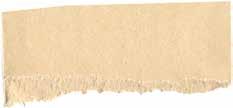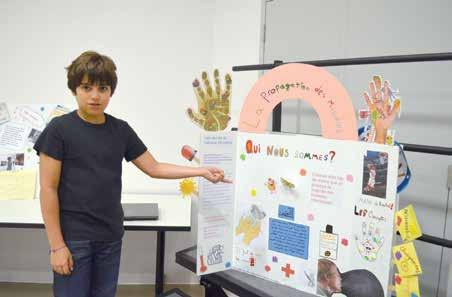
3 minute read
A Mother, Three Fifth Graders and PYPX
Tales from the Classroom A mother, three fifth graders and PYPX
So, the good intentioned mother, at the constant urging of her daughter, decides to help out the fifth graders research their PYPX project. The subject chosen is street children in Lebanon. Among their quest is to find out if these children are exposed to drugs. The mother takes the three fifth graders: one boy and two girls to the Hobeish Police station – the headquarters for Drug Enforcement in Beirut. The officer who usually faces hardcore drug addicts finds himself under the scrutiny of three wide-eyed children, each armed with a list of questions. He launches into a lengthy explanation of the types of drugs used in Lebanon and its dangers. Before long, other curious officers on the floor begin to outdo themselves in wanting to provide information to the youngsters. The biggest attraction is a wide display of drugs used in the country. “You see this?” asks the officer. “This is heroin. Very bad. The worst. And this, this is cannabis. Sometimes people sneak this out of the country by hiding it in carbon paper. Now, this stuff here is….” “What’s ‘carbon paper’?” asks one child. “You know, to copy from,” replies the officer. “Now this drug is called….” “What do you mean ‘copy from’?” asks another child. “The paper you put between papers,” the officer replies. “Now about this drug…” “Why do you put it between the papers?” continues a child. Sighing, the officer goes to his office and brings back some carbon paper. “This is carbon paper,” he says. “Now about this drug…” “How does it work?” asks a child. The officer walks back to his office and brings out a notebook and gently places the carbon between the paper and writes a letter. He then shows the children the copy. “See? Carbon paper,” he says. “Now, these drugs here…” “Does it work with a pencil as well?” asks a child. “Well, we only use ink at the station here so I’ve never tried it,” he says. “You see these pills here, these are…” “Can we try and see if pencils work?” asks a child. The officer walks back to the office and gets a pencil. The children gather excitedly to see if the ‘experiment’ works. It doesn’t. “What if we used different colored ink?” one child inquires. But there is only blue ink at the station. The officer quickly disposes of the carbon paper. “Now about cannabis…” he begins hesitantly.

The next day, the mother, proud of herself that she was able to help out her daughter and friends in their research, takes her daughter to the Security Generale Headquarters to get her passport renewed. As the mother waits her turn patiently, she suddenly hears an excited shriek from her daughter. She turns to see her precious fifth grader pointing to a few officers taking notes. “Look mom!” the daughter practically shouts in the middle of the Security Generale lobby filled with all the good law enforcement officers. “Look! The carbon paper used to hide cannabis!”
Moral: RUN don’t walk to the nearest exit after a PYPX project.
PYPX Exhibition
The Primary Years Program Exhibition (PYPX) is held in May and open to parents. The exhibition marks the last PYP project before fifth graders graduate to the middle school. The final project encompasses all the skills they have been learning since preschool, which include research, inquiry, communication, presentation, social, writing, and IT skills. Every PYPX project is required to have an action component. Fifth graders are divided into groups – with a mentor (teacher or parent) assigned to each.










